Match the Column I with Column II and mark the approprite choice.
Column IColumn II(A)Galena(i)Abrasive(B)Diamond(ii)Metal carbonyls(C)Carbon monoxide(iii)Hydrides of Si(D)Silanes(iv)An ore of lead
(A) → (iv), (B) → (ii), (C ) → (i), (D) → (iii)
(A) → (iv), (B) → (i), (C ) → (ii), (D) → (iii)
(A) → (ii), (B) → (i), (C ) → (iii), (D) → (iv)
(A) → (i), (B) → (ii), (C ) → (iii), (D) → (iv)
The correct Answer is:B
To solve the matching question, we need to pair items from Column I with their corresponding descriptions in Column II. Let's analyze each item step by step.
1. Identify Galena:
- Galena is known as an ore of lead. Its chemical formula is PbS (lead sulfide).
- Match: Galena (A) matches with (iv) "An ore of lead".
2. Identify Diamond:
- Diamond is a form of carbon and is recognized as one of the hardest materials. It is commonly used in cutting tools and jewelry due to its hardness.
- Match: Diamond (B) matches with (i) "Abrasive".
3. Identify Carbon Monoxide:
- Carbon monoxide (CO) has a tendency to form metal carbonyls. This is due to its ability to donate a lone pair of electrons to transition metals, forming complexes known as metal carbonyls.
- Match: Carbon monoxide (C) matches with (ii) "Metal carbonyls".
4. Identify Silanes:
- Silanes are compounds that contain silicon and hydrogen. They are known as the hydrides of silicon.
- Match: Silanes (D) matches with (iii) "Hydrides of Si".
Final Matches:
- A → (iv) "An ore of lead"
- B → (i) "Abrasive"
- C → (ii) "Metal carbonyls"
- D → (iii) "Hydrides of Si"
Conclusion:
Thus, the correct order is:
- A: iv
- B: i
- C: ii
- D: iii
The correct option is B.
- Galena is known as an ore of lead. Its chemical formula is PbS (lead sulfide).
- Match: Galena (A) matches with (iv) "An ore of lead".
- Diamond is a form of carbon and is recognized as one of the hardest materials. It is commonly used in cutting tools and jewelry due to its hardness.
- Match: Diamond (B) matches with (i) "Abrasive".
- Carbon monoxide (CO) has a tendency to form metal carbonyls. This is due to its ability to donate a lone pair of electrons to transition metals, forming complexes known as metal carbonyls.
- Match: Carbon monoxide (C) matches with (ii) "Metal carbonyls".
- Silanes are compounds that contain silicon and hydrogen. They are known as the hydrides of silicon.
- Match: Silanes (D) matches with (iii) "Hydrides of Si".
- A → (iv) "An ore of lead"
- B → (i) "Abrasive"
- C → (ii) "Metal carbonyls"
- D → (iii) "Hydrides of Si"
Thus, the correct order is:
- A: iv
- B: i
- C: ii
- D: iii
Topper's Solved these Questions
- BOOK - NCERT FINGERTPS ENGLISHCHAPTER - THE P-BLOCK ELEMENTSEXERCISE - HIGHER ORDER THINKING SKILLS9videos
THE P-BLOCK ELEMENTS
- BOOK - NCERT FINGERTPS ENGLISHCHAPTER - THE P-BLOCK ELEMENTSEXERCISE - EXEMPLAR PROBLEMS15videos
THE P-BLOCK ELEMENTS
- BOOK - NCERT FINGERTPS ENGLISHCHAPTER - STRUCTURE OF ATOM EXERCISE - Assertion And Reason15videos
STRUCTURE OF ATOM
- BOOK - NCERT FINGERTPS ENGLISHCHAPTER - THE S-BLOCK ELEMENTSEXERCISE - Assertion And Reason15videos
THE S-BLOCK ELEMENTS
Similar Questions
Match the column I with Column II and mark the appropriate choice.
 View Solution
View SolutionMatch the column I with Column II and mark the appropriate choice.
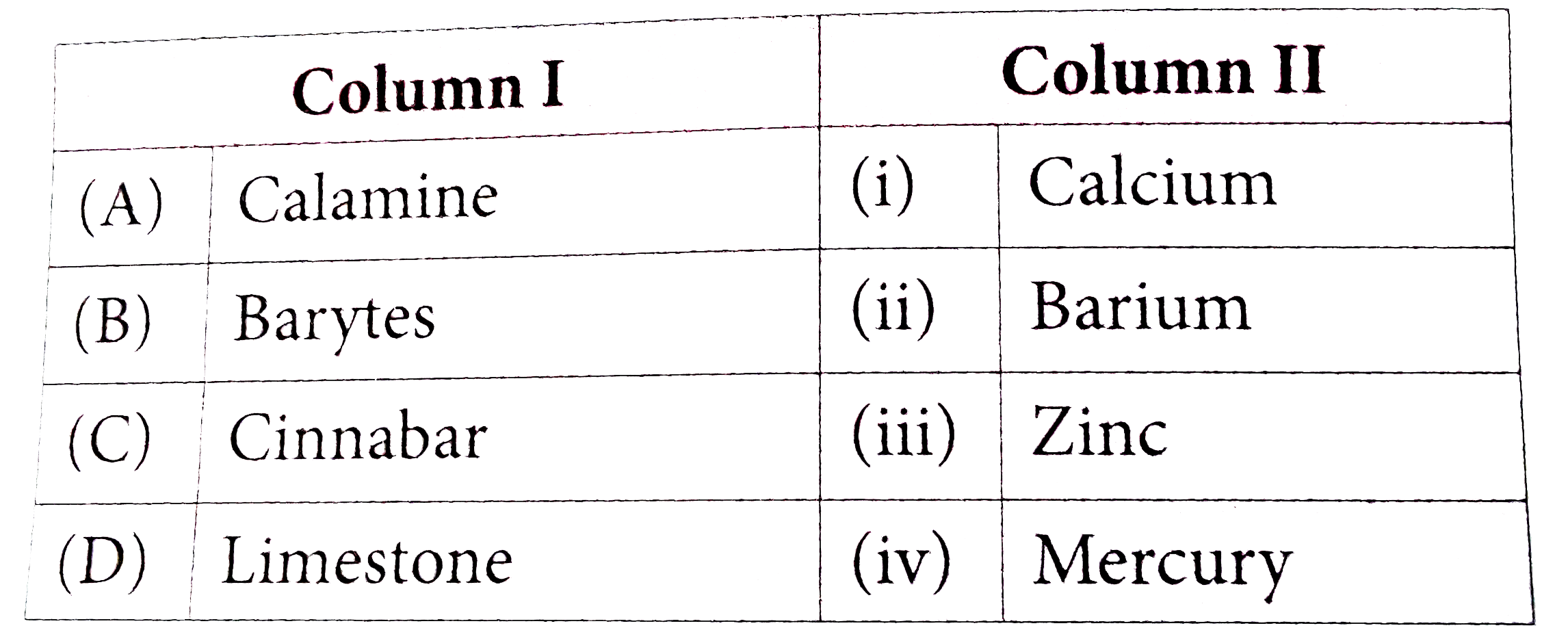 View Solution
View SolutionMatch the column I with Column II and mark the appropriate choice.
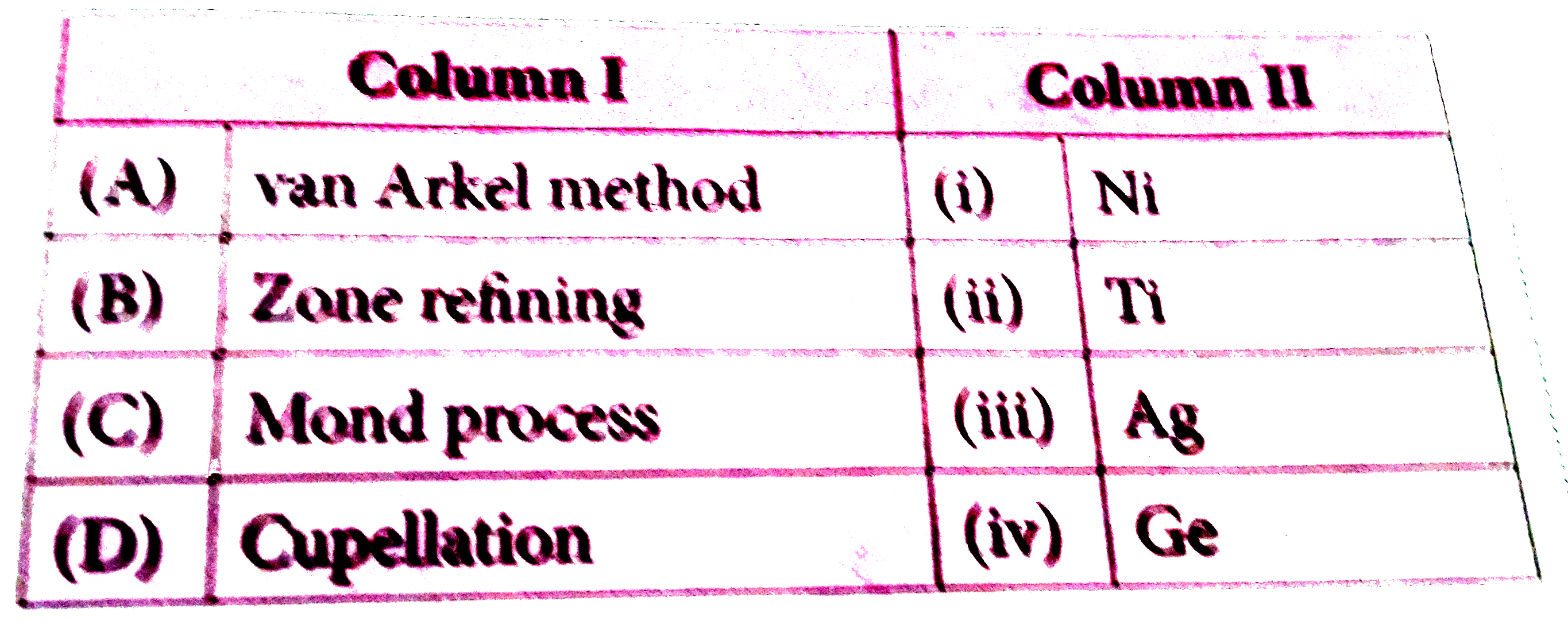 View Solution
View SolutionMatch the column I with Column II and mark the appropriate choice.
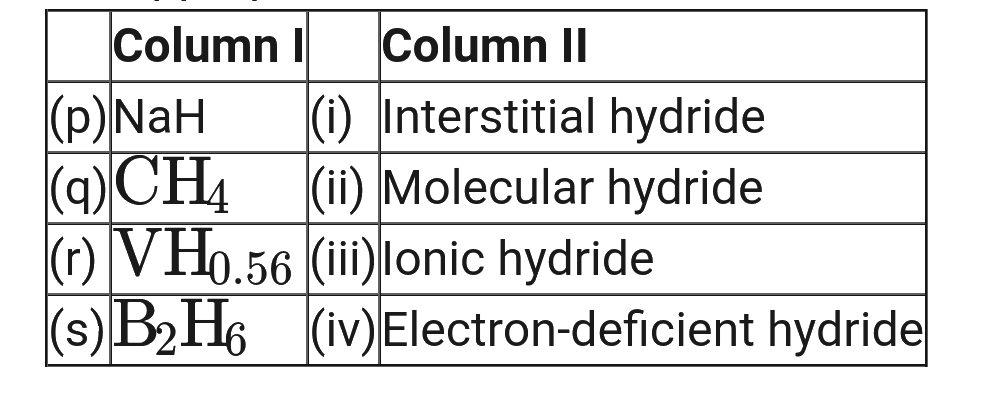 View Solution
View SolutionMatch the column I with Column II and mark the appropriate choice.
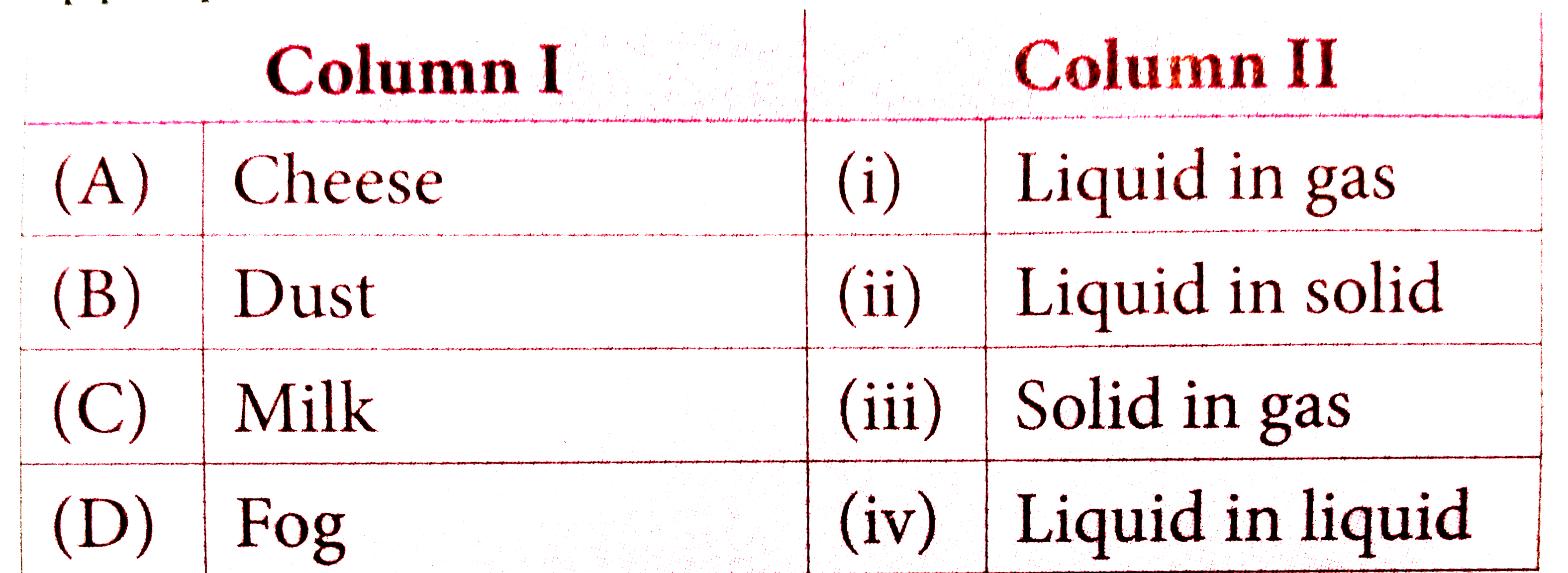 View Solution
View SolutionMatch the column I with Column II and mark the appropriate choice.
 View Solution
View SolutionMatch the column I with Column II and mark the appropriate choice.
 View Solution
View SolutionMatch the column I with Column II and mark the appropriate choice
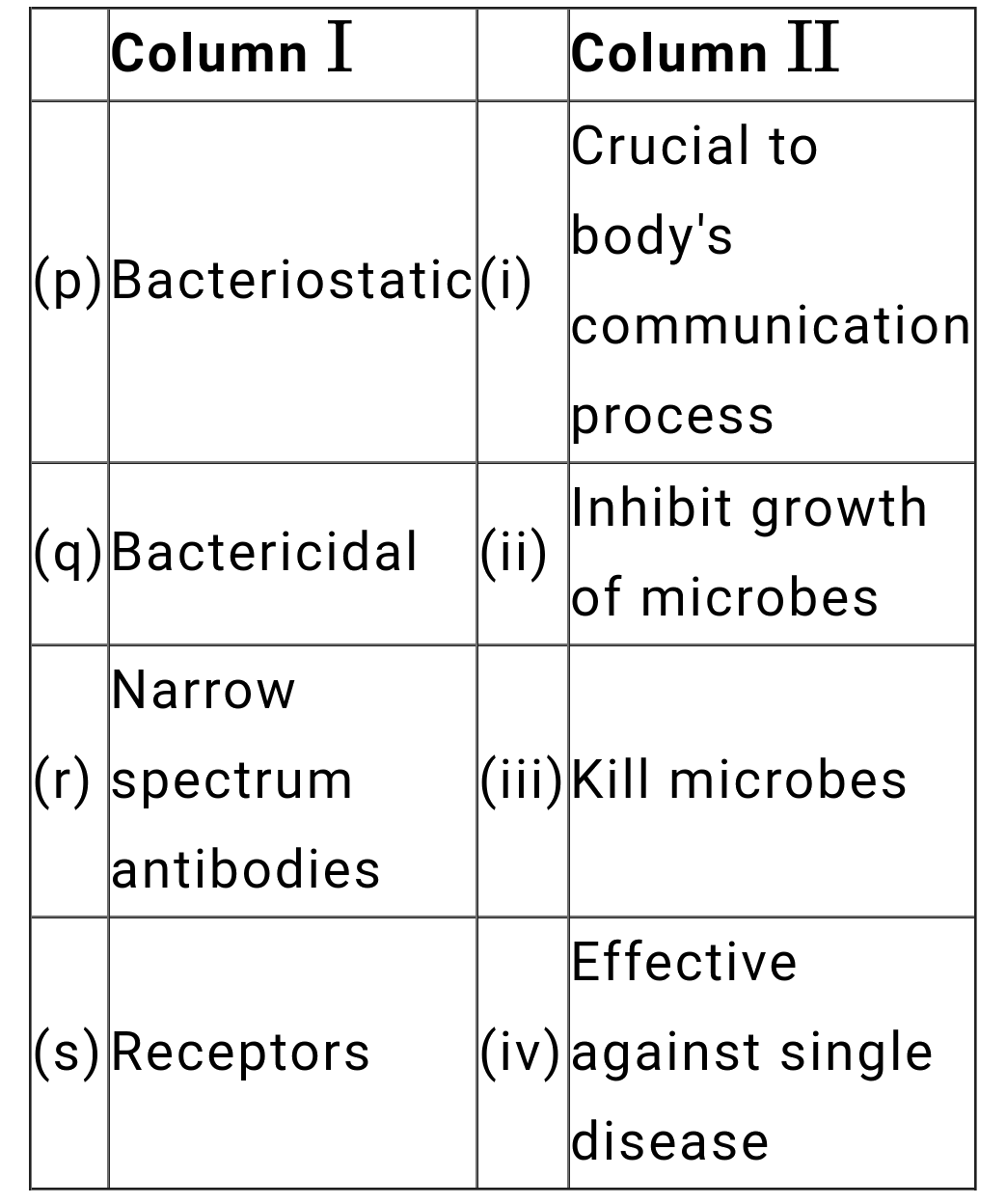 View Solution
View SolutionMatch the column I with Column II and mark the appropriate choice.
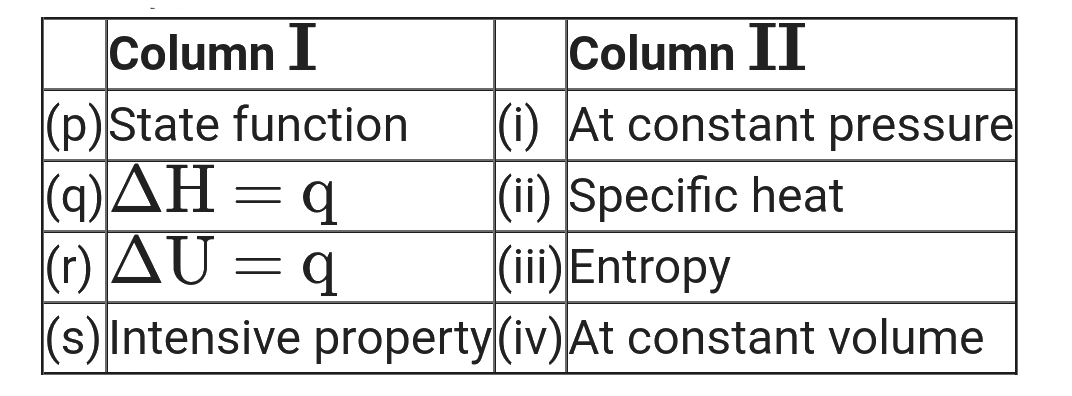 View Solution
View SolutionMatch the column I with Column II and mark the appropriate choice.
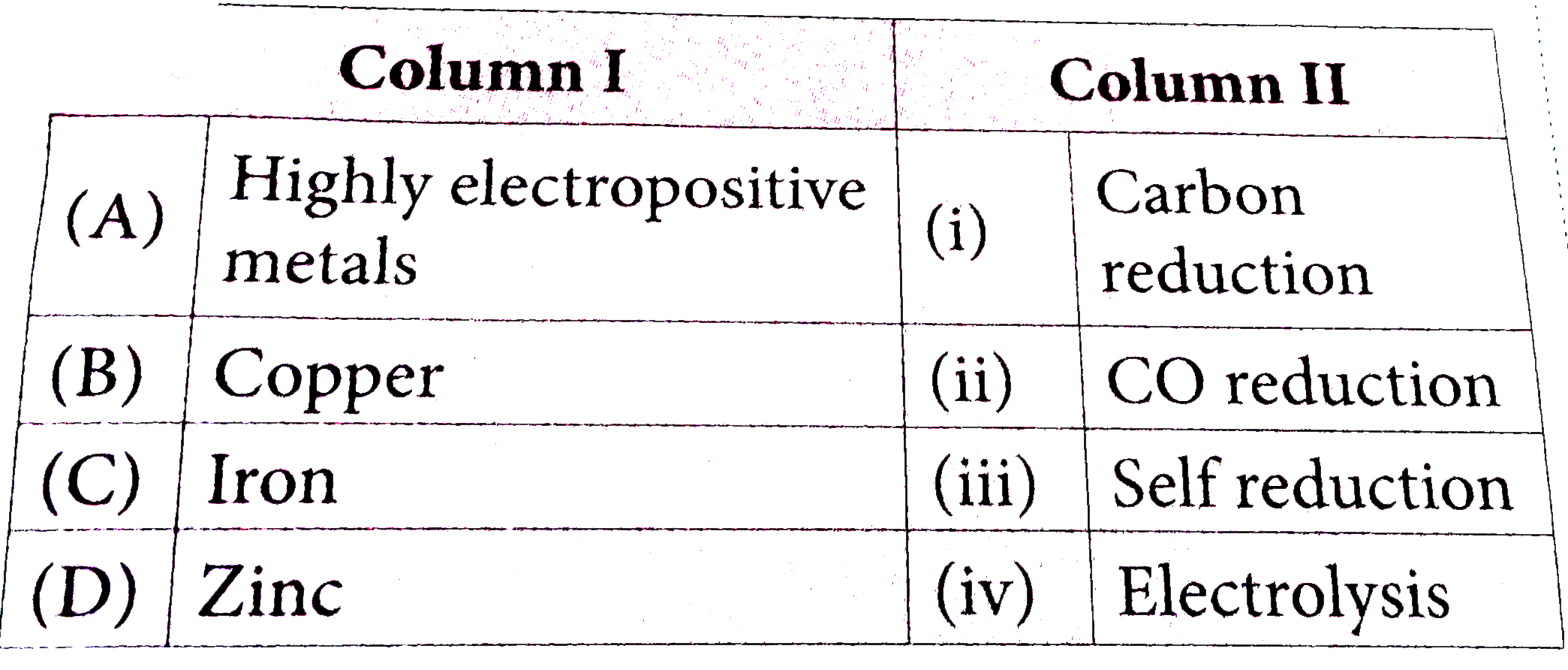 View Solution
View Solution

